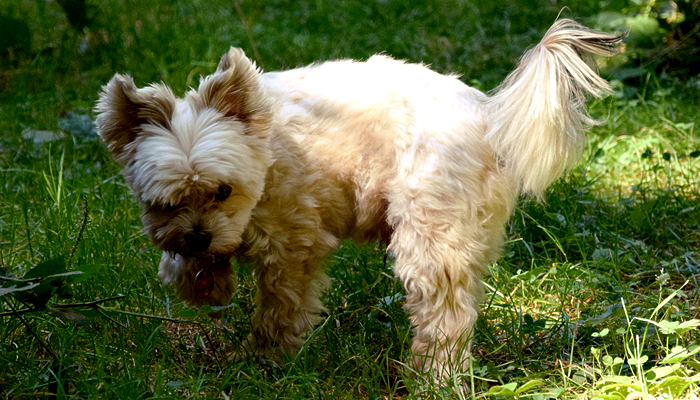As we discussed last week, this week, we are discussing how urine control works, but more importantly: how it works, explains how to fix it!
First, just a little scientific nuts and bolts:
Urine control occurs at the bladder, in the middle of the back, and at the brain. All three of these neurological levels need to be operating well so that dogs and cats don’t wet the bed at night (other species too).
Human babies, puppies, and kittens are all born such that when the bladder fills, it empties on its own – this is the first diaper stage of life. Urine doesn’t just dribble out, because the bladder sphincter, a muscle, does not empty the bladder until the bladder is full.
As puppies, kittens and babies grow up, their brain takes over and tells the bladder sphincter to wait until the time is right to empty. Potty training has been completed at this stage in the game. There is also a nerve center in the spinal cord at the end of the ribs (at the level of the thoracic vertebrae) that is involved in urine control. With age, the nerve signals don’t flow as well as they used to and leakage can occur. (This is the second diaper stage of life.)
What this brief anatomy/neurology overview shows us that “problems“ anywhere along this path can cause “problems” controlling urine. Next, a brief look at some of these potential problems.
Fortunately, head trauma is a rare event, but easy to see how it can lead to urinary incontinence issues as the brain is no longer telling the bladder sphincter when it’s appropriate to release the bladder contents.
More common than head trauma is interference between the signals from the pelvis to the brain, anywhere along the path. Arthritis is a common example of what can interfere with nerve signal transmission; intravertebral disc disease (slipped disc) is another relatively frequent cause of loss of urine control.
However, it does not require pathological problems to lead to leaky bladder in our cats and dogs; it can be as simple as moving funny in a hole on the ground causing rotation in the pelvis. This is essentially a problem of life in a world based on gravity. These are the dogs that crab when they walk, the cats with an extra swish in their walk and reluctance to jump up.
For many animals, simply playing, walking, and living in gravity are enough to interrupt full signal transmission from bladder to brain. Leaky bladder, especially at night when the brain is sleeping, is a common consequence.
The great news is that for most dogs and cats “body work” sessions are enough to help – bodywork consist of chiropractic, acupuncture, massage, reiki, cranial sacral therapy, and more.
For many pets, any of these types of body work are enough to prevent urine leakage. As mentioned last week, it’s not uncommon to need “body work” sessions every 3-4 weeks. (Gravity doesn’t stop, those pelvic twists can come back.)
By understanding these mechanisms of urine control, you prevent your pet’s discomfort, and possibly pain.

